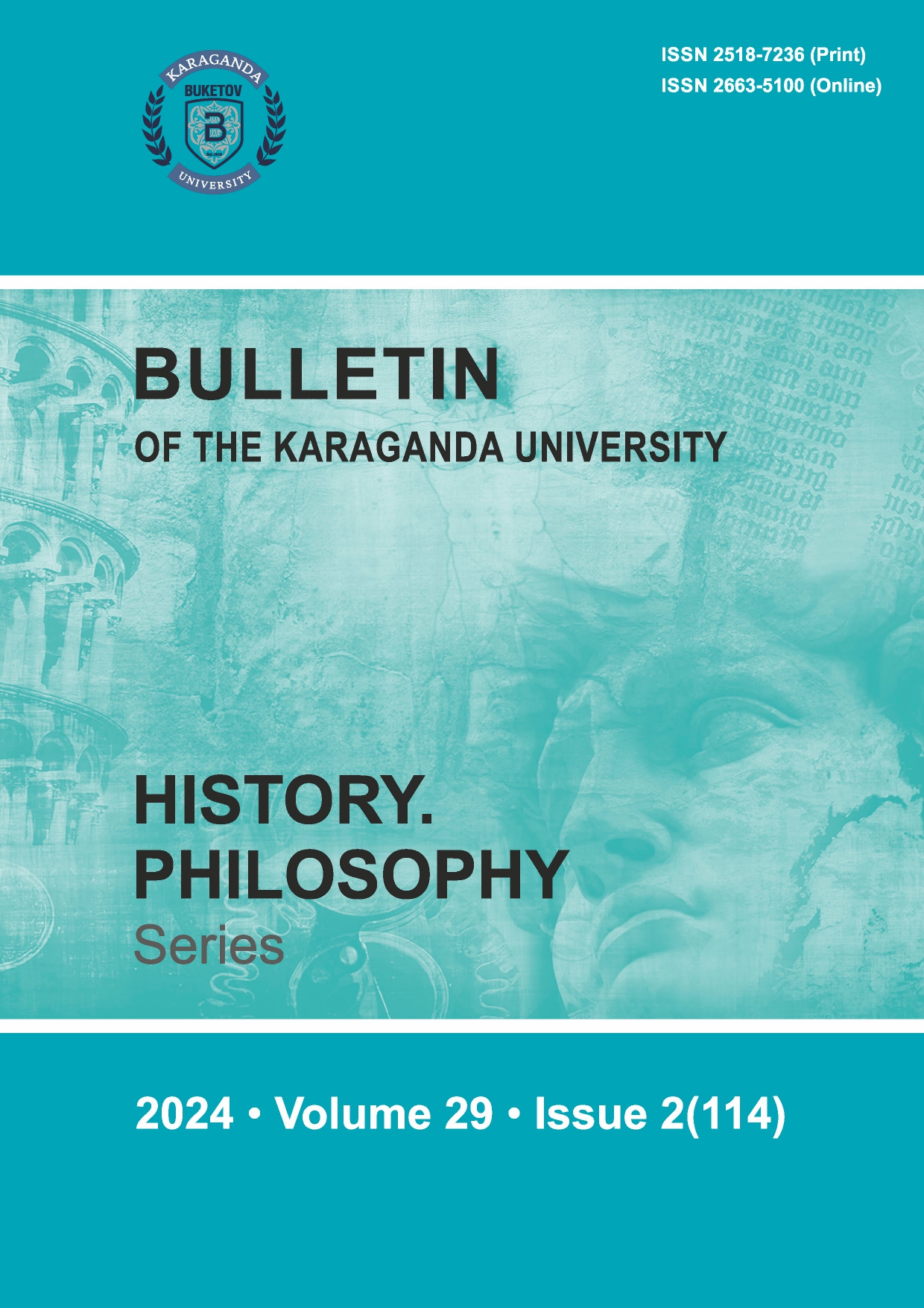Early Iron Age petroglyphs in the Kairakkol and Karakungey mountains
DOI:
https://doi.org/10.31489/2024hph2/207-218Keywords:
petroglyphs, Early Iron Age, Zhetysu, Kairakkol, KarakungeyAbstract
The article presents the results of field research in South-East Kazakhstan in 2022–2023. The authors introduce into scientific circulation information about early Iron Age rock paintings recorded in the Kairakkol and Karakungey mountains in the Aksu region of the Zhetysu region. Data are provided on six clusters of petroglyphs with drawings from this chronological period. The drawings are found on open vertical and horizontal planes of large and small rocky outcrops, on the tops of the southern, southwestern and southeastern slopes of the mountains. The rock carvings were made using two main techniques: the piquetage technique and surface carving. Petroglyphs of the Early Iron Age are part of large accumulations of petroglyphs of different periods. The list of images includes deer, wolves, wild boars, mountain goats and argali, anthropomorphic characters. A number of petroglyphs find direct or indirect analogies in the art of the early Saka nomads of Central Asia, the Saka tribes of Zhetysu and the nomads of the Hun-Sarmatian period. Based on stylistic analogies in the composition of the Early Iron Age petroglyphs of the studied region and on the basis of the analysis carried out, three stable chronological groups were identified: 1) 8-7 centuries BC; 2) 6–3 centuries BC; 3) 2nd century BC – 5th century AD.




